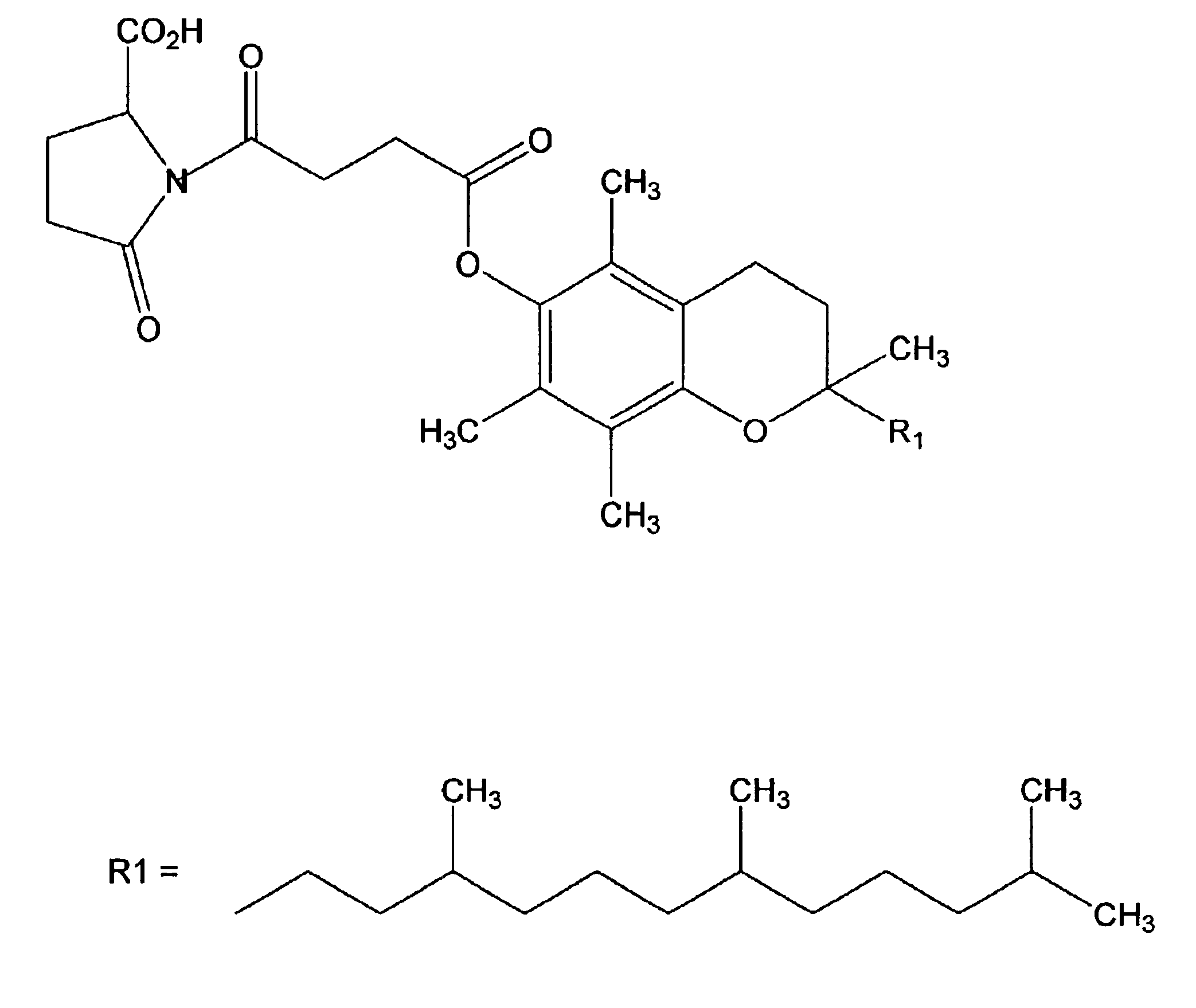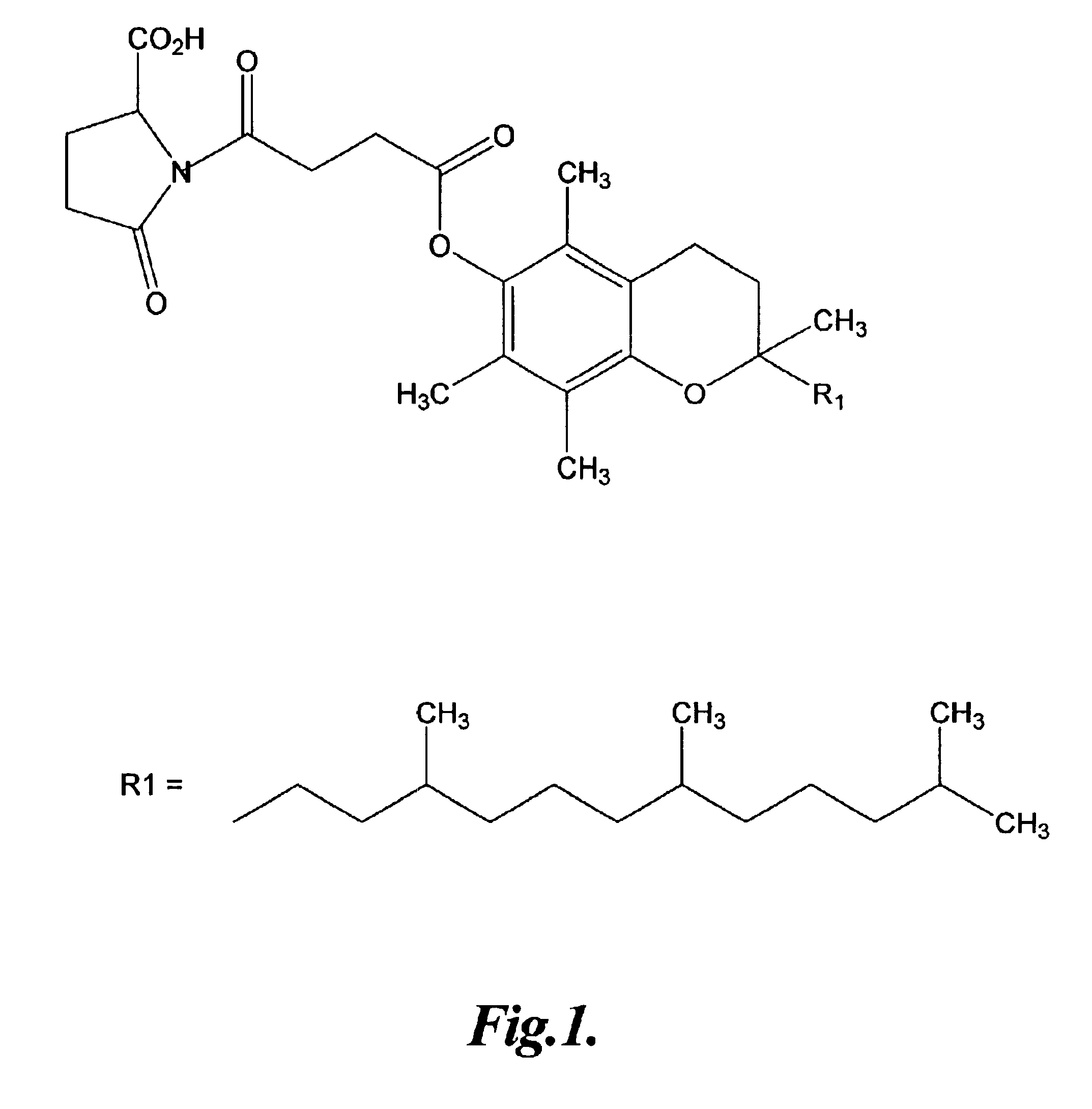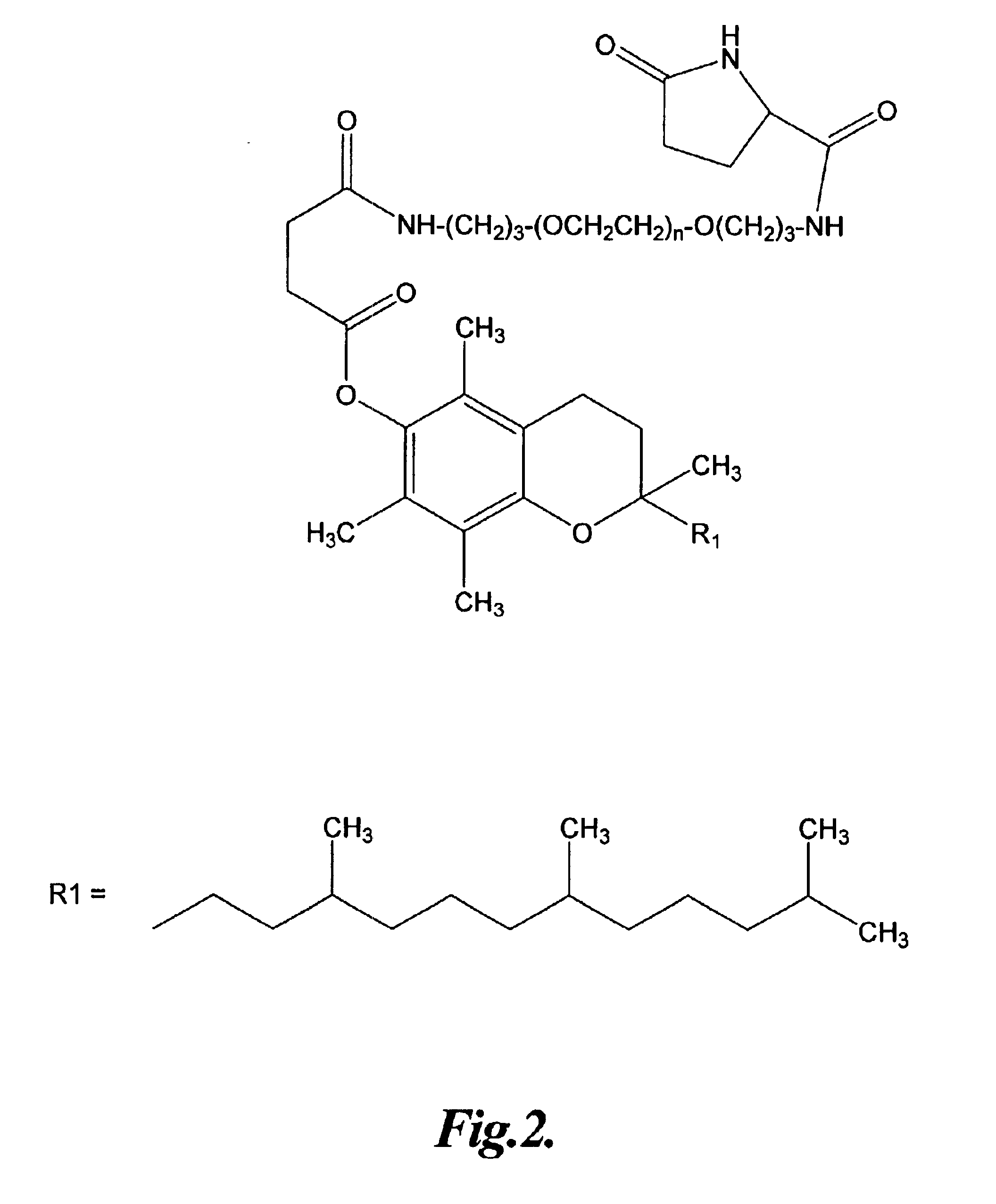Vitamin E conjugates
a technology of conjugates and vitamins, applied in the field of vitamin e conjugates, can solve the problems of affecting the solubility of echinacea, affecting the effect of chemotherapeutic or anti-cancer agents, and being difficult to direct injection or highly dangerous, etc., and achieve the effect of improving the solubility
- Summary
- Abstract
- Description
- Claims
- Application Information
AI Technical Summary
Benefits of technology
Problems solved by technology
Method used
Image
Examples
example 1
The Preparation of a Representative Vitamin E Succinic Acid Pyroglutamate Conjugate
In this example, the preparation of a representative vitamin E pyroglutamate conjugate is described.
To 10 g vitamin E succinic acid (VESA) (Aldrich or Eastman) in 150 ml tetrahydrofuran (THF) was added 2.85 g N-methylmorpholine dropwise while stirring and maintaining the temperature at 0° C. with an ice water salt bath. This was followed by dropwise addition of 3.34 g isobutyl chloroformate in THF over a period of 15 minutes while continued stirring at 0° C. The reaction mixture was then removed from the ice bath and left stirring at room temperature for 30 minutes. After an additional hour of stirring, the solution was then filtered using Celite on a glass filter to remove the chloride salt of N-methylmorpholine. The resulting solution was added dropwise to a mixture 2.92 g L-pyroglutamic acid dissolved in 30 ml hot water containing 0.5 ml N,N-dimethylformamide (DMF) and 2.85 g triethylamine. The tem...
example 2
The Preparation of a Representative Vitamin E Succinic Acid Polyoxyethylene Amine Pyroglutamate Conjugate
In this example, the preparation of a representative vitamin E pyroglutamate conjugate is described.
To 1 g of VESA in 100 ml THF was added 1.5 eq. N-methylmorpholine dropwise while stirring and maintaining the temperature at 0° C. with an ice water salt bath. This was followed by dropwise addition of 4.93×10−3 mole isobutyl chloroformate in THF over a period of 15 minutes while stirring at 0° C. The solution was left stirring for 30 minutes at 0° C., the ice bath removed, and then stirred at room temperature for 30 minutes. After an additional hour of stirring, the solution was filtered using Celite on a glass filter to remove the chloride salt of N-methylmorpholine. The filtrate was then added dropwise to a solution of 4.00 g bispropylamino polyethylene glycol (Sigma) in THF and 1.5 eq. triethylamine in a solution of 10 ml H2O and 40 ml THF (sonicated until clear) maintained at ...
example 3
The Preparation of a Representative Vitamin E Amine Pyroglutamate Conjugate
In this example, the preparation of a representative vitamin E pyroglutamate conjugate is described.
To 4 g (N-benzyloxycarbonyl)pyroglutamic acid in 150 ml THF was added 2.30 g N-methylmorpholine dropwise while stirring and maintaining the temperature at 0° C. with an ice water salt bath. This was followed by dropwise addition of 2.69 g isobutyl chloroformate in THF over a period of 15 minutes while stirring at 0° C. The solution was left stirring for 30 minutes at 0° C., the ice bath removed from the ice bath and then stirred at room temperature for 30 minutes. After an additional hour of stirring, the solution was filtered using Celite on a glass filter to remove the chloride salt of N-methylmorpholine. The filtrate was then added dropwise to a solution of 6.00 g tocopheramine (Rhodia Chirex) and 2.30 g triethylamine in 60 ml THF maintained at 0° C. The resulting solution was left stirring overnight. The fo...
PUM
| Property | Measurement | Unit |
|---|---|---|
| Composition | aaaaa | aaaaa |
| Acidity | aaaaa | aaaaa |
| Lipophilicity | aaaaa | aaaaa |
Abstract
Description
Claims
Application Information
 Login to View More
Login to View More - R&D
- Intellectual Property
- Life Sciences
- Materials
- Tech Scout
- Unparalleled Data Quality
- Higher Quality Content
- 60% Fewer Hallucinations
Browse by: Latest US Patents, China's latest patents, Technical Efficacy Thesaurus, Application Domain, Technology Topic, Popular Technical Reports.
© 2025 PatSnap. All rights reserved.Legal|Privacy policy|Modern Slavery Act Transparency Statement|Sitemap|About US| Contact US: help@patsnap.com



